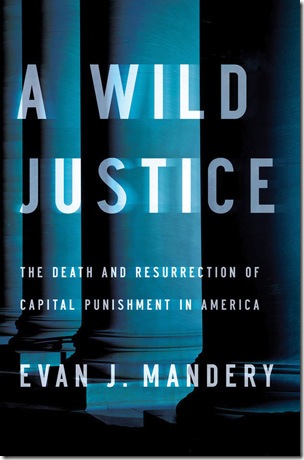 When the U.S. Supreme Court struck down death penalty laws in 1972, it effectively reversed the death sentences of more than 700 inmates, including 96 in Florida.
When the U.S. Supreme Court struck down death penalty laws in 1972, it effectively reversed the death sentences of more than 700 inmates, including 96 in Florida.
The high court’s ruling in Furman v. Georgia was decided 5-4. The nine justices wrote nine separate opinions totaling more than 600 pages. It was the longest and most confusing decision in Supreme Court history, in the view of Evan J. Mandery, who has now written a masterful account of the demise and resurrection of the death penalty.
Led by Florida in 1972, states quickly began passing new death penalty laws to meet the Supreme Court’s objections to the prior laws. Some states made the death penalty mandatory for certain crimes to eliminate arbitrariness. Others created appeal procedures to deal with unjust sentences.
Significantly, the Supreme Court never ruled that capital punishment itself violated the Eight Amendment’s prohibition against “cruel and unusual punishment.” It simply said that existing laws were unconstitutional.
Four years after Furman, the high court upheld the updated death penalty statues in several states, including Florida.
When Florida executed convicted killer John Spenkelink in the electric chair in 1979, “the floodgates opened,” Mandery writes. Since then states have executed more than 1,300 men and women, including 78 in Florida.
The decisions striking down and later upholding death penalty laws did not end the debate. Subsequent decisions overturned capital punishment for rapists of adult women, for the insane, for the mentally retarded and for offenders under 18.
Much of the drama has now shifted to state legislatures. Six states have abolished capital punishment since 2007, but the death penalty remains legal in 32 states.
A Wild Justice is much more than a book of numbers and legal cases. It excels with rare insight into the colorful lives, quirks and backgrounds of Supreme Court justices.
A few snapshots: Justice Hugo Black was a former member of the Ku Klux Klan. Justice Thurgood Marshall was a “hedonist” who “smoked constantly and drank more.” Justice Byron White played pro football before he joined the Supreme Court. The bias against women was so strong that two justices said they would resign if a woman was named to the Supreme Court.
Capital punishment is one of the most contentious issues ever to come before the court. Traditionalists argued that the death penalty was in wide use in the colonies and was, therefore, consistent with the prohibition against “cruel and unusual punishment.” But opponents noted that public flogging, branding with a hot iron and cutting off ears were also popular in colonial times, but no one would tolerate such punishments today.
The general public has been ambivalent about capital punishment. Polls in the 1960s showed people split almost 50/50 on the issue. However, after the Supreme Court rulings in the 1970s, public support for the death penalty soared, reaching a peak of 80 percent in 1994. The reasons for the shift are not clear.
Supporters argue that executing murderers has a deterrent effect, but social scientists say they can find no evidence that capital punishment reduces the murder rate. Opponents cited glaring racial disparities, particularly in Southern states, where blacks are more likely to be sentenced to death than whites.
Mandery describes the infighting and frequent turf wars among justices. The justices in essence “operate nine independent law firms, which interact with one another only sporadically and clumsily.”
My main reservation about this well-written book is that it is too long and often repetitious. The narrative occasionally bogs down in excessive detail. General readers may give up. Tighter editing and a clearer summary would have helped.
Nonetheless, those who stick with the book will be rewarded. Mandery spent six years researching and writing A Wild Justice. If he has strong personal opinions about the death penalty, he does not share them. He lets the facts, arguments and personalities speak for themselves.
A Wild Justice: The Death and Resurrection of Capital Punishment in America, by Evan J. Mandery; Norton, 534 pp., $29.95
Bill Williams is a freelance writer in West Hartford, Conn., and a former editorial writer for The Hartford Courant. He is a member of the National Book Critics Circle and can be reached at billwaw@comcast.net.